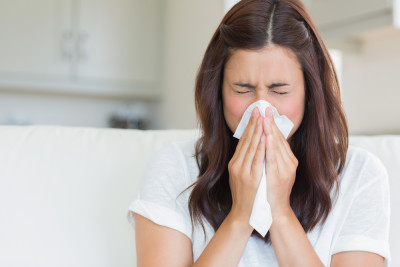
Many people suffer from allergy symptoms in the home. Chances are your house is filled with dust, dust mites, mould, and other allergy triggers you can’t see.
If you’re prone to itchy eyes and a runny nose when you step inside, there are a few ways to keep your indoor allergies under control. Follow these tips to reduce the allergens in your home and minimise your allergy symptoms.
It’s important to know how to differentiate your allergy symptoms from cold and flu symptoms, as they can often get confused. Allergy symptoms can hang around for weeks, while cold and flu symptoms generally last 5-10 days.
Common symptoms of indoor allergies include:
If you’re experiencing coloured nasal discharge (green or yellow) or body aches and chills, you may have a cold. Be sure to visit your doctor as these symptoms can indicate a more serious health problem.
Houses can play host to many allergens that can trigger allergy symptoms. The most common triggers include dust, dust mites, mould, pet dander, and cockroaches.
They may be tiny, but dust particles can cause big trouble for those who are prone to allergies and asthma. Dust is mostly made up of dead skin cells and dirt and pollen tracked in from outside, and can build up anywhere in the home, from floors and table surfaces to furniture and windowsills. If you have a dust allergy, you might find your symptoms are aggravated by cleaning.
These microscopic bugs feed on dead skin cells and produce harmful allergens with their faeces. Allergy symptoms aren’t caused by a bite or a sting, they’re caused by the waste dust mites leave behind. They can be found in warm, humid environments, and like to hang out in carpets, bedding, and upholstery.
When airborne mould spores are inhaled, they can trigger allergy and hay fever symptoms. Mould thrives in humid environments, and will generally be found in the kitchen or bathroom, where steam and moisture are more prevalent.
Your furry friend could be causing you more harm than good. Pet dander is a combination of dead skin cells and hair shed by your dog or cat. If your pet lives inside, pet dander will likely make up a large part of the dust in your home.
Ever turn on the kitchen light at night to find a cockroach crawling over the bread? Cockroaches’ saliva, faeces, and shedding body parts can trigger allergy symptoms. Another reason to buy those cockroach baits!
If you’re experiencing indoor allergies, it’s a good idea to visit an allergy specialist. Allergists can perform special tests to determine what’s triggering your symptoms and help you take steps to reduce your symptoms.
If you’re sick of sneezing every time you enter your home, there are ways you can take control your allergies. From eliminating the allergens in your home to using medication, there are a couple of ways to help reduce your allergy symptoms.
From over-the-counter antihistamines and nasal sprays to prescribed medications, there are several options for reducing your allergy symptoms. If you visit an allergy specialist, they’ll be able to determine your allergy triggers and prescribe the appropriate medication or solution.
Want to banish the allergens from your house? Get in touch with our friendly team of cleaning professionals for a cleaner and healthier home.
 Back to resources page
Back to resources page






"The special for 3 rooms is conditional on the area of the carpet measuring up to 29 square metres, and being of good condition. Heavy staining and lighter colour carpets might cost a small additional fee."
